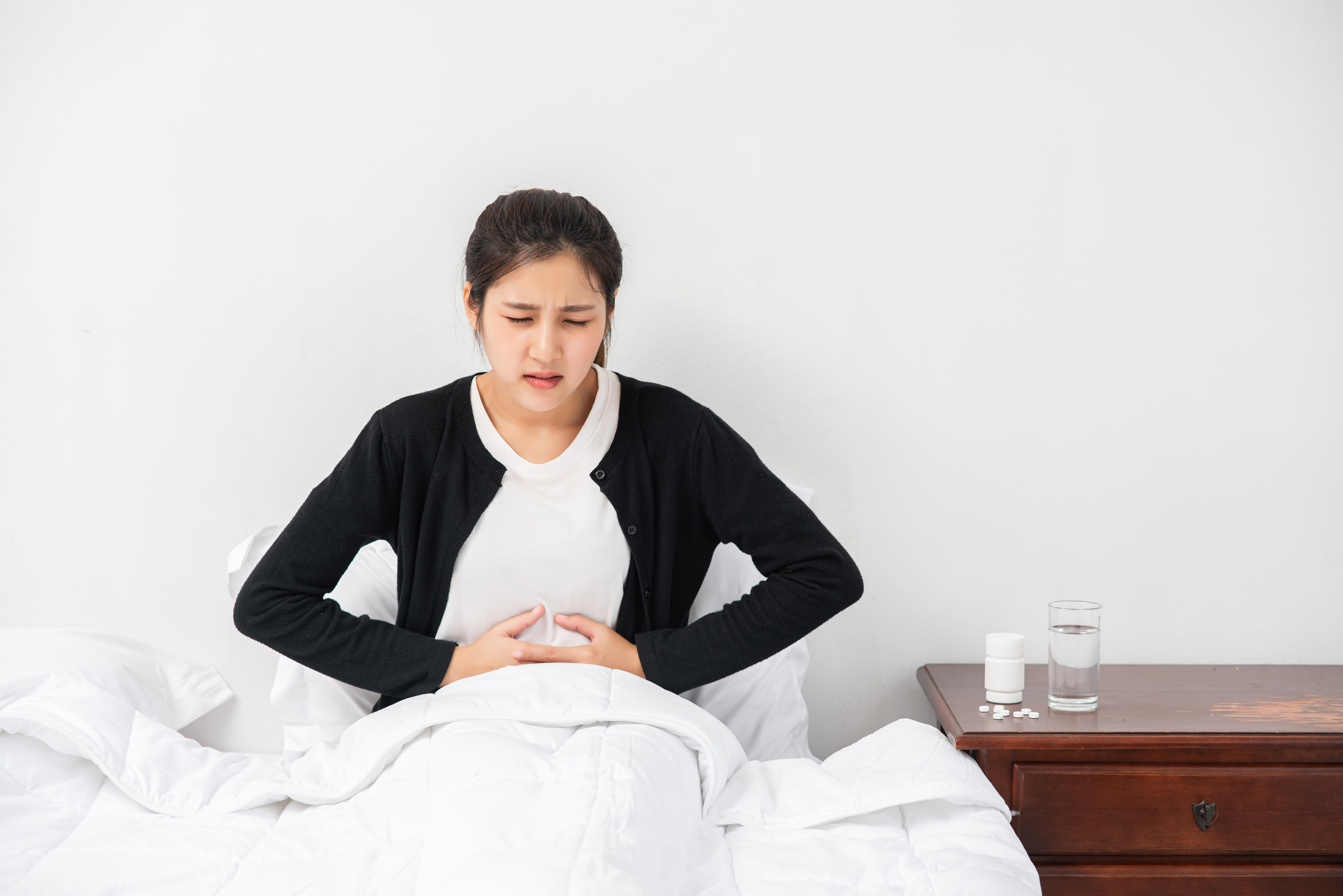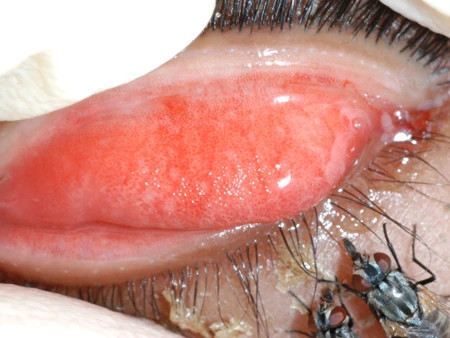Definisi
Penyakit radang panggul atau Pelvic Inflammatory Disease (PID) adalah penyakit infeksi dan radang organ reproduksi wanita bagian atas, termasuk rahim, saluran indung telur, dan indung telur. Penyakit ini umumnya disebabkan oleh penyakit menular seksual, seperti klamidia dan gonore.
Bakteri yang menyebabkan penyakit menular seksual kemudian berjalan ke atas menuju rahim dan menyebabkan infeksi. Namun, pada beberapa kasus yang jarang, infeksi lain yang bukan ditularkan secara seksual juga dapat menyebabkan penyakit ini.
Penyakit radang panggul umumnya dialami oleh wanita berusia 15-25 tahun yang aktif secara seksual. Jumlah orang yang mengalami penyakit radang panggul sulit diketahui dengan pasti, tetapi jumlah penyakit ini di negara berpendapatan tinggi diperkirakan sebesar 10-20 kasus per 1000 wanita usia reproduksi. World Health Organization (WHO) menyebutkan bahwa penyakit menular seksual termasuk ke dalam 5 jenis penyakit terbanyak yang dialami orang dewasa.
Penyebab
Penyakit radang panggul paling banyak (sekitar 85% kasus) disebabkan oleh bakteri Neisseria gonorrhoeae (penyebab gonore) dan Chlamydia trachomatis (penyebab klamidia). Bakteri ini biasanya didapat dari berhubungan seksual tanpa menggunakan pelindung. Sekitar 10-20% kasus infeksi klamidia dan gonore yang tidak ditangani akan berkembang menjadi penyakit radang panggul.
Secara klinis, radang panggul akibat gonore menunjukkan gejala yang lebih berat dibandingkan penyebab lain. Radang panggul akibat klamidia lebih sering tidak menunjukkan gejala, namun tetap dapat menyebabkan komplikasi jangka panjang yang buruk.
Mikroba lain yang dapat menyebabkan penyakit radang panggul di antaranya:
- Mycoplasma genitalium
- Trichomonas vaginalis
- Herpes simplex virus 2 (HSV-2)
- Bakteri yang menyebabkan bacterial vaginosis (Gardnerella vaginalis, Peptostreptococcus, Bacteroides)
- Patogen penyebab penyakit pernapasan (Haemophilus influenza, Streptococcus pneumonia, Streptococcus aureus)
- Bakteri usus (Escherichia coli, Bacteroides fragilis, Streptococcus grup B)
Patogen-patogen di atas bertanggung jawab terhadap sekitar 15% kasus penyakit radang panggul. Selain itu, orang dengan HIV/AIDS (ODHA) diketahui memiliki risiko terkena penyakit radang panggul yang lebih besar. Hal ini terjadi karena infeksi HIV dihubungkan dengan peningkatan kejadian beberapa penyakit menular seksual seperti klamidia dan infeksi jamur Candida. Infeksi menular seksual ini kemudian akan berkembang menjadi penyakit radang panggul.
Pada kasus lain, bakteri terkadang dapat masuk ke organ reproduksi di saat mekanisme pelindung dari leher rahim terganggu. Hal ini dapat terjadi selama menstruasi, setelah persalinan, keguguran, atau aborsi. Selain itu, bakteri juga dapat masuk saat pemasangan alat kontrasepsi dalam rahim atau prosedur lainnya yang melibatkan masuknya alat medis tertentu ke dalam rahim.
Faktor Risiko
Beberapa faktor risiko penyakit radang panggul adalah sebagai berikut:
- Aktif secara seksual dan berumur kurang dari 25 tahun.
- Memiliki banyak pasangan seksual.
- Berhubungan seksual dengan orang yang memiliki pasangan seksual lebih dari satu.
- Berhubungan intim tanpa menggunakan kondom.
- Melakukan pembersihan vagina (douching) secara teratur. Hal ini menyebabkan terganggunya keseimbangan jumlah bakteri baik dan jahat yang ada di vagina, sehingga infeksi lebih mudah terjadi.
- Memiliki riwayat penyakit radang panggul atau infeksi menular seksual sebelumnya. Anda memiliki risiko yang lebih tinggi untuk terkena penyakit radang panggul jika sudah pernah mengalaminya.
- Menggunakan intrauterine device (IUD). Kontrasepsi IUD dapat meningkatkan risiko radang panggul, dengan risiko tertinggi selama 3 minggu pertama pemasangan. Namun, hal ini sangat jarang terjadi (9,6 kasus per 1000 pemasangan IUD). Jika penyakit radang panggul terjadi, IUD tidak perlu dilepaskan. IUD dilepaskan jika gejala tidak berkurang setelah dilakukan pengobatan.
Gejala
Anda mungkin tidak menyadari terkena penyakit radang panggul, karena penyakit ini dapat menimbulkan gejala yang ringan atau tidak bergejala sama sekali. Namun jika memiliki gejala, Anda mungkin akan merasakan:
- Nyeri di bagian bawah perut. Intensitas nyeri dapat bervariasi, dari nyeri ringan hingga sangat berat. Nyeri biasanya dirasakan tumpul, berdenyut atau terasa seperti kram, terjadi di kedua sisi perut dan berlangsung terus menerus. Nyeri biasanya dirasakan setelah hari pertama haid terakhir dan diperparah oleh gerakan, olahraga, atau senggama.
- Nyeri panggul.
- Keluarnya cairan berbau dari vagina.
- Perdarahan dari vagina setelah berhubungan intim.
- Demam >38°C. Demam terkadang disertai menggigil.
- Mual dan muntah.
- Sensasi panas seperti terbakar atau nyeri ketika berkemih.
- Perdarahan vagina di antara masa haid.
Tidak semua gejala mungkin Anda rasakan jika memiliki penyakit radang panggul. Infeksi gonore biasanya menyebabkan gejala radang panggul yang lebih berat.
Diagnosis
Tidak ada pemeriksaan/tes khusus yang dapat mendiagnosis penyakit radang panggul. Diagnosis penyakit ini pada dasarnya ditegakkan secara klinis. Artinya, dokter akan memikirkan diagnosis penyakit ini terutama berdasarkan gejala dan riwayat medis yang anda miliki serta pemeriksaan fisik.
Tes laboratorium dan pencitraaan seperti USG dan CT scan dapat membantu mengonfirmasi diagnosis. Namun, jika hasilnya negatif, diagnosis penyakit radang panggul belum tentu dapat disingkirkan, sehingga dokter mungkin akan memberikan pengobatan hanya berdasarkan karakteristik klinis pasien.
Dokter akan menanyakan mengenai gejala-gejala yang anda miliki. Pasien dengan penyakit radang panggul biasanya datang dengan karakteristik: wanita berumur kurang dari 25 tahun, sedang haid, memiliki banyak pasangan seksual, tidak menggunakan kontrasepsi dan tinggal di daerah yang memiliki angka kejadian penyakit menular seksual yang tinggi. Deskripsikan gejala dan faktor risiko yang Anda miliki dengan jelas.
Dokter juga akan menanyakan durasi nyeri yang Anda rasakan. Nyeri pada penyakit radang panggul biasanya berlangsung selama kurang dari 7 hari. Jika lebih dari 3 minggu, dokter mungkin akan memikirkan diagnosa penyakit lain.
Untuk memperkuat diagnosis, dokter mungkin akan melakukan pemeriksaan fisik. Dokter akan melakukan pemeriksaan fisik kelamin luar dan dalam serta pemeriksaan bimanual. Pemeriksaan alat kelamin bagian dalam mungkin dilakukan dengan menggunakan spekulum. Alat ini dimasukkan ke dalam vagina untuk memperlebar liang vagina, sehingga leher rahim dapat terlihat dengan jelas.
Pada penyakit radang panggul, dapat terlihat adanya cairan yang keluar dari leher rahim. Pemeriksaan bimanual dilakukan dengan memasukkan dua jari ke dalam rongga vagina dan di saat bersamaan tangan yang lain menekan bagian bawah perut. Hal ini dilakukan untuk mendeteksi nyeri yang mungkin timbul dari penekanan rahim, leher rahim dan indung telur.
Pemeriksaan lain mungkin akan dilakukan, seperti:
- Tes darah.
- Tes kehamilan. Hal ini dilakukan untuk menyingkirkan kemungkinan diagnosis kehamilan ektopik, yang juga dapat menimbulkan nyeri panggul.
- Pemeriksaan infeksi gonore dan klamidia. Sampel untuk tes akan diambil melalui swab pada leher rahim atau menggunakan sampel urin, kemudian diperiksa di laboratorium. Selain itu, kultur bakteri mungkin dapat dilakukan.
- Tes urin untuk menyingkirkan kemungkinan infeksi saluran kemih, yang dapat menimbulkan gejala nyeri panggul.
- Ultrasound (USG).
Pada beberapa kasus, dokter Anda juga mungkin akan melakukan:
- Biopsi endometrium. Hal ini dilakukan untuk mengambil dan memeriksa sampel dari endometrium (dinding bagian dalam rahim).
- Laparoskopi. Pada prosedur ini, dokter akan membuat sayatan kecil pada perut dan menggunakan alat khusus untuk melihat struktur organ reproduksi secara langsung.
- Culdocentesis. Pemeriksaan ini jarang dilakukan. Pada pemeriksaan ini, jarum akan dimasukkan ke dalam bagian belakang vagina untuk mengambil cairan rongga panggul yang kemudian akan diperiksa di laboratorium.
Tata Laksana
Penyakit radang panggul dapat diobati. Namun, pengobatan tidak akan memperbaiki kerusakan yang sudah terjadi akibat infeksi. Oleh karena itu, semakin lama Anda menunda berobat ke dokter, semakin besar juga kemungkinan Anda mengalami komplikasi yang dapat disebabkan penyakit ini.
Dokter mungkin akan memberikan antibiotik untuk mengobati penyakit ini. Meskipun gejala sudah hilang, Anda tetap harus menghabiskan seluruh dosis obat antibiotik yang diresepkan dokter. Pastikan pasangan seksual Anda juga menjalani tes untuk mendeteksi penyakit menular seksual dan diobati jika hasil tes positif. Anda dan pasangan Anda juga harus menghindari berhubungan seksual hingga pengobatan selesai.
Namun, jika Anda tidak kunjung sembuh setelah diberi pengobatan, menunjukkan gejala yang berat, atau memiliki abses di rongga panggul, Anda mungkin perlu dirawat di rumah sakit. Pada kasus yang jarang, operasi bahkan diperlukan untuk mengatasi infeksi. Hal ini dilakukan jika abses sudah pecah atau dokter memperkirakan abses yang ada akan segera pecah, sehingga diperlukan operasi untuk membersihkan dan menghentikan penyebaran infeksi.
Komplikasi
Penyakit radang panggul yang tidak diobati dapat menyebabkan timbulnya jaringan parut dan kantung berisi nanah (abses). Hal ini dapat menyebabkan kerusakan permanen pada organ reproduksi.
Komplikasi yang dapat terjadi di antaranya:
- Kehamilan ektopik terganggu. Penyakit radang panggul merupakan salah satu penyebab utama kehamilan ektopik.
- Kemandulan. Kerusakan pada organ reproduksi dapat menyebabkan kemandulan. Semakin sering Anda mengalami penyakit radang panggul, semakin tinggi kemungkinan Anda tidak dapat hamil.
- Penyakit panggul kronis. Penyakit radang panggul dapat menyebabkan nyeri panggul yang berlangsung selama berbulan-bulan atau bertahun-tahun.
- Abses tuba ovarium. Kumpulan nanah (abses) dapat terbentuk di organ reproduksi Anda. Hal ini biasanya terjadi pada tuba falopi dan indung telur, namun dapat juga terbentuk di rahim. Jika abses tidak ditangani, infeksi yang mengancam nyawa dapat terjadi.
Pencegahan
Anda dapat mencegah terkena penyakit radang panggul dengan cara berikut ini:
- Berhubungan intim dengan aman. Gunakan kondom setiap kali anda berhubungan seksual, batasi pasangan seksual anda dan tanyakan riwayat seksual pasangan Anda.
- Berdiskusi dengan dokter mengenai kontrasepsi. Terdapat banyak metode kontrasepsi yang tidak melindungi Anda dari penyakit menular seksual. Jika anda menggunakan pil KB atau IUD, Anda tetap harus memakai kondom saat berhubungan intim agar terhindar dari infeksi menular seksual.
- Melakukan tes. Jika Anda berisiko tinggi tertular, Anda disarankan untuk melakukan skrining penyakit menular seksual secara rutin. Deteksi dan pengobatan dini penyakit-penyakit seperti klamidia, gonore, dan sifilis dapat menghindari komplikasi yang dapat ditimbulkannya, termasuk penyakit radang panggul. Jika Anda menderita penyakit radang panggul, minta pasangan Anda untuk melakukan tes juga agar penularannya dapat dihentikan.
- Jangan melakukan douching. Mencuci vagina, baik dengan air atau campuran bahan kimia tertentu, dapat menyebabkan keseimbangan jumlah bakteri di vagina terganggu, sehingga Anda lebih rentan terkena infeksi menular seksual.
Kapan Harus ke Dokter?
Segera pergi ke dokter jika Anda memiliki gejala-gejala seperti:
- Nyeri yang berat pada perut bagian bawah atau panggul
- Mual dan muntah
- Demam hingga >38°C
- Keluarnya cairan berbau dari vagina
Meskipun tidak berat, jika Anda memiliki gejala penyakit radang panggul, segera pergi ke dokter agar terhindar dari komplikasi. Anda juga harus segera berobat jika memiliki gejala penyakit menular seksual, sepeti keluarnya cairan berbau dari vagina, nyeri saat berkemih dan perdarahan dari vagina di antara masa haid. Penanganan dini penyakit menular seksual dapat mencegah terjadinya penyakit radang panggul.
Mau tahu informasi seputar penyakit lainnya? Cek di sini, ya!
- dr Ayu Munawaroh, MKK
Centers for Disease Control and Prevention. (2022, April 18). STD facts - pelvic inflammatory disease. Retrieved October 23, 2022, from https://www.cdc.gov/std/pid/stdfact-pid.htm
Cleveland Clinic. (2020, November 23). Pelvic inflammatory disease (PID): Symptoms, treatments & causes. Retrieved October 23, 2022, from https://my.clevelandclinic.org/health/diseases/9129-pelvic-inflammatory-disease-pid
Jennings, L. K., & Krywko, D. M. (2022, June 5). Pelvic Inflammatory Disease. Retrieved October 23, 2022, from https://www.ncbi.nlm.nih.gov/books
Mayo Clinic. (2022, April 30). Pelvic inflammatory disease (PID). Retrieved October 23, 2022, from https://www.mayoclinic.org/diseases-conditions/pelvic-inflammatory-disease/symptoms-causes/syc-20352594
Medscape. (2021, September 13). Pelvic inflammatory disease workup: Approach considerations, laboratory studies, Transvaginal ultrasonography. Retrieved October 23, 2022, from https://emedicine.medscape.com/article/256448-workup#c1
National Health Service UK. (2022, January 27). Pelvic Inflammatory Disease. Retrieved October 23, 2022, from https://www.nhs.uk/conditions/pelvic-inflammatory-disease-pid/












